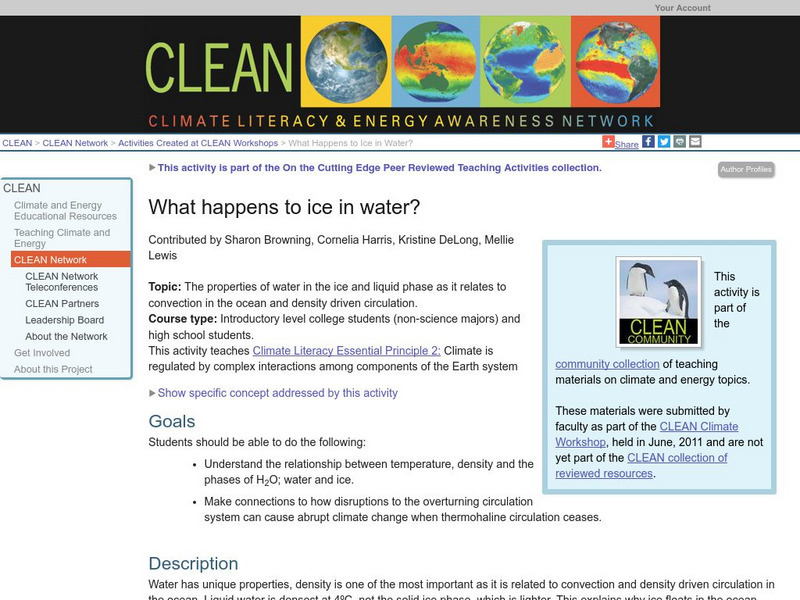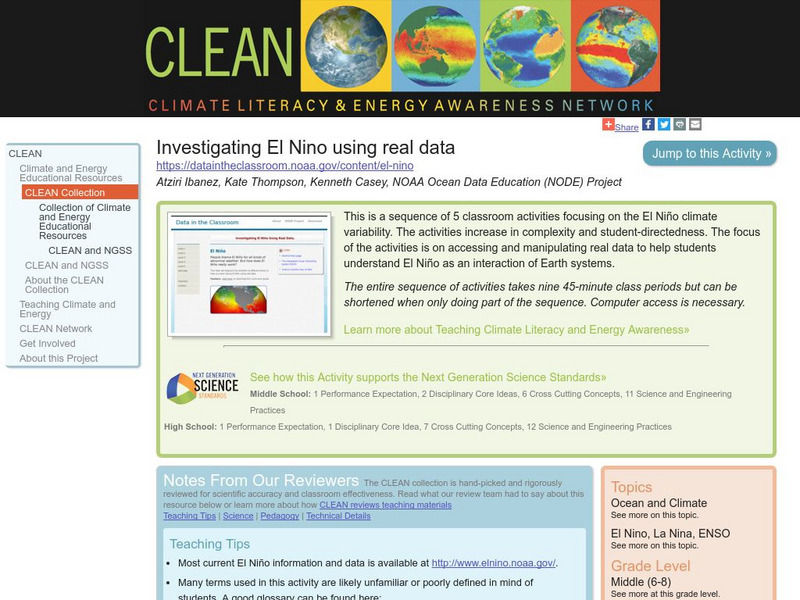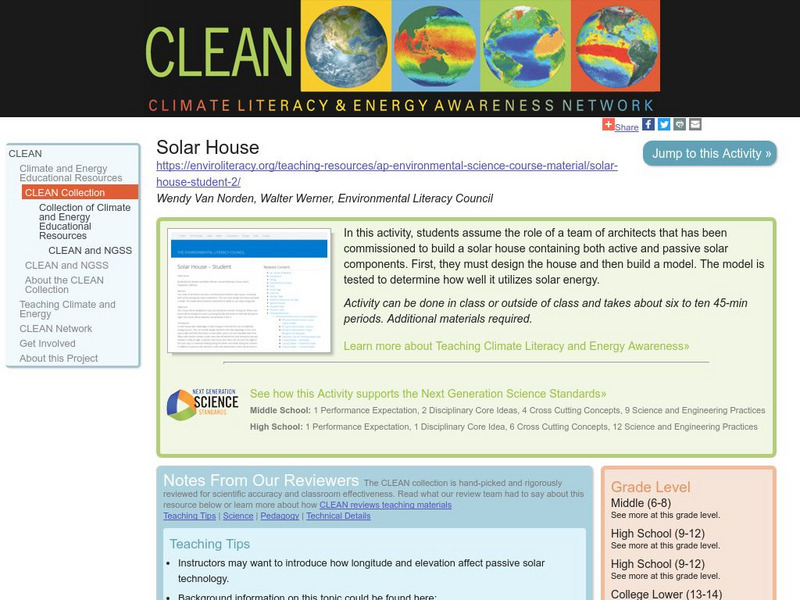Hi, what do you want to do?
Curated OER
How Clean is the Water?
Pupils read about and discuss water and how it is used as a resource and how engineers use technology to preserve it. In this water lesson plan, students look at a picture of water treatment and tell what is wrong with the picture.
Curated OER
Keeping Our Surroundings Clean
Students define the word environment. In this environmental awareness instructional activity students, orally make a list of at least 6 ways to keep our environment clean. Students individually create posters that show how to keep the...
Curated OER
Sight Word List Eleven
In this literacy worksheet, students identify and spell correctly twenty sight words from a list. There is 20 words used often in speaking and writing that students should know.
Climate Literacy
Clean: Compact Fluorescent Light Bulbs Cost Benefit Analysis
This analysis activity allows students to calculate electrical usage in home lighting, and create a cost-benefit analysis for cost and energy savings by replacement of incandescent light bulbs with compact fluorescent or LED light bulbs.
Climate Literacy
Clean: Effects of Increased Co2 in the Air on Seawater and Distilled Water
Students perform an experiment comparing the impacts of CO2 on salt water and on fresh water. In a short demonstration, students examine how distilled water and seawater are affected differently by increasing carbon dioxide in the air.
Science Education Resource Center at Carleton College
Serc: Connecting Global Climate Change With Engineering
A short series of lessons that explore the importance of engineering solutions to the management of climate change, by brainstorming ways to remove CO2 from the atmosphere and store it in a form that does not promote global warming.
Climate Literacy
Clean: Climate: A Balancing Act
This activity allows students to explore how Earth's energy balance is regulating climate.
PBS
Pbs Learning Media: Melting Ice
A mulit-media lesson where students explore the role that ice plays on Earth, the factors causing it to melt, and the local and global consequences of melting ice.
Climate Literacy
Clean: Zero Energy Housing
Students investigate passive solar building design with a focus solely on heating. Then they design and build their own model houses, and test them for thermal gains and losses during a simulated day and night.
Climate Literacy
Clean: Solar Water Heater
Student teams design and build solar water heaters to capture energy in the form of solar radiation and convert it to thermal energy. Once the model devices are constructed, students perform efficiency calculations and compare designs.
Climate Literacy
Clean: What Happens to Ice in Water?
Students investigate the properties of water in the ice and liquid phase as it relates to convection in the ocean and density driven circulation, and ultimately the climate.
Climate Literacy
Clean: Climate Change and the Oceans
Students discover the role that the oceans play in climate change, and how climate change affects the oceans. It is lesson eight in a nine-lesson module "Visualizing and Understanding the Science of Climate Change."
Climate Literacy
Clean: Investigating El Nino Using Real Data
A sequence of five online activities focusing on the El Nino climate variability. The focus of the activities is on accessing and manipulating real data to help students understand El Nino as an interaction of Earth systems.
NASA
Nasa: Why Is Carbon Important?
Students explore the relationship between atmospheric carbon dioxide concentrations and temperature, and how these relate to climate change. Graph and map data are used as evidence to support the scientific claims they develop through...
Thinkport Education
Thinkport: Water, Water, Everywhere?
Students learn about global access to clean water and apply the engineering design process to develop a solution to purify water.
Climate Literacy
Clean: Climate Feedback Loops
This is the seventh of nine lessons from a student learning module called "Visualizing and Understanding the Science of Climate Change." This lesson addresses climate feedback loops and how these loops help drive and regulate Earth's...
Climate Literacy
Clean: Climate Science Digital Resources
A digital collection of high-quality lesson resources that address climate and energy related topics.
Climate Literacy
Clean: Do Scientists Agree About the Causes of Climate Change?
Students follow a four-step process to debunk the myth regarding scientific consensus on climate change.
Islami City
Islami City: The Partial Ablution
Here are basic instructions for partial and full ablution, the performance of cleaning and purification, which is required before prayer in the Muslim tradition.
FT Exploring
Ft Exploring: Wind Turbines and the Energy in Wind
Discover the science concepts behind wind turbines and wind energy.
Climate Literacy
Clean: Solar House
Students in teams of architects are challenged to build a solar house, containing both active and passive solar components. They design the house, build a model, and test it to determine its ability to use solar energy efficiently.
Climate Literacy
Clean: Climate Change and Disease
Students research the relationship between hosts, parasites, and vectors for common vector-borne diseases and evaluate how climate change could affect the spread of disease.
Climate Literacy
Clean: Colorado River Supply
Students examine available data of water in the Colorado River Basin, study the possible consequences of changes to various user groups, and suggest solutions to adapt to these changes.
PBS
Pbs Learning Media: Global Climate Change: The Effects of Global Warming
Students conduct an investigation to determine CO2 levels in four different gas samples, examine evidence of global warming in our environment, and consider their own role in contributing to global warming.

























